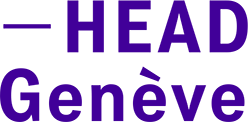- The school
- Studies and Research
- BACHELOR
- MASTER
- DOCTORATE
- RESEARCH
- TRANSDISCIPLINARITY
- POOLS
- CONTINUING EDUCATION
- For students
- Studying at the HEAD
- InfoLab
- Living in Geneva
- Tuition fees and sholarship
- Library
- Regulations and instructions
- Projects
- Events
- Press
- Partnerships and prizes
Artificial intelligence open-source, ComfyUI
Generative Artificial Intelligence (AI) became widely known with the arrival of ChatGPT on the consumer market in November 2022. Numerous tools capable of producing text, images, music or even videos have emerged and transformed uses in both personal and professional spheres. But behind the media frenzy, how well do we really understand how it works? Are proprietary services the only option?
Many training courses have emerged to introduce professionals to these technologies, often from a generalist perspective and focused on office or text-based applications.
The objective of this course is to develop a detailed understanding of how generative AI technologies work, to broaden perspectives, and to reclaim creative processes. To achieve this, it offers an alternative to dominant proprietary services by exploring open-source tools — the only approach that enables real control over the tool, transparency of methods, and freedom of use.
This course will focus on ComfyUI, a modular (node-based) graphical interface based on Stable Diffusion, which allows the creation, visualisation and execution of complex creative protocols (workflows) for images, text, sound and video while maintaining precise control over each step of the creative process.
Audience
This practical course, interspersed with theoretical insights, is aimed at individuals involved in content production (text, image, video, audio) who wish to gain a critical and in-depth understanding of how generative AI works and free themselves from the limitations of proprietary tools, which can often be restrictive in terms of aesthetics and customisation.
Some familiarity with proprietary generative AI tools (Midjourney, Krea, ChatGPT) is helpful but not required.
Learning Outcomes
- Gain an understanding of how artificial intelligence works by exploring open-source generative tools through hands-on practice.
- Discover and experiment with open-source alternatives such as Stable Diffusion, and identify the philosophical, technical, and economic differences between these open tools and mainstream proprietary solutions (Midjourney, OpenAI, Adobe).
- Develop the ability to use ComfyUI and design your own workflow.
- Engage in collective reflection on the ethical issues, technical limitations, and responsibilities associated with the use of generative AI.
Prerequisites
- Basic IT skills: familiarity with computers, the internet, and digital tools.
- A PC with an NVIDIA graphics card OR a Mac M1/M2/M3/M4, and at least 50GB of available storage.
Desktop computers will be provided for those interested who do not have a laptop meeting the technical requirements.
Course duration: 5 days
Dates:
- Friday 23 January 2026
- Saturday 24 January 2026
- Friday 30 January 2026
- Saturday 31 January 2026
- Friday 06 February 2026
Hours: 09:00–12:30 and 13:30–17:00
Fee: CHF 1,500 / CHF 1,200 for HEAD – Geneva Alumni
Language: French
Course format: Practical workshop
Certificate awarded: Certificate of Continuing Education
Credits: Equivalent to 2 ECTS
Location: HEAD Campus, Building A, Digital Pool, Route des Franchises 2, 1203 Geneva
Voir le programme détaillé
Day 4
Demonstration of ControlNet and IPAdapters
Project development and technical support, group discussion on progress/discoveries
Day 1
Introduction to visual generative AI
History and evolution of AI models for images
Key concepts: prompt, datasets, diffusion models
State of the art and presentation of mainstream visual generative AI tools
ChatGPT Image / Midjourney
Practical exercise no. 02 “Reproduction” from the Automation Manual – AI tool used: Midjourney
Introduction to visual generative AI
History and evolution of AI models for images
Key concepts: prompt, datasets, diffusion models
State of the art and presentation of mainstream visual generative AI tools
ChatGPT Image / Midjourney
Practical exercise no. 02 “Reproduction” from the Automation Manual – AI tool used: Midjourney
Day 2
Presentation of open-source AI tools
Stable Diffusion: origins, uses, community
ComfyUI: principles of a node-based interface, advantages/disadvantages, examples
Community resources: CivitAI, Hugging Face
Identifying the differences with the mainstream tools previously explored
Development of an art direction project for a fictional object/product throughout the course, in parallel with the theoretical inputs
Demonstration of the creation of one or two creative protocols in ComfyUI, including ComfyUI Manager and the most popular nodes
Project development and technical support, group discussion on progress/discoveries
Presentation of open-source AI tools
Stable Diffusion: origins, uses, community
ComfyUI: principles of a node-based interface, advantages/disadvantages, examples
Community resources: CivitAI, Hugging Face
Identifying the differences with the mainstream tools previously explored
Development of an art direction project for a fictional object/product throughout the course, in parallel with the theoretical inputs
Demonstration of the creation of one or two creative protocols in ComfyUI, including ComfyUI Manager and the most popular nodes
Project development and technical support, group discussion on progress/discoveries
Day 3
Demonstration of LoRA models
Project development and technical support, group discussion on progress/discoveries
Demonstration of LoRA models
Project development and technical support, group discussion on progress/discoveries
Day 4
Demonstration of ControlNet and IPAdapters
Project development and technical support, group discussion on progress/discoveries
Day 5
Finalisation of projects
Final presentation
Finalisation of projects
Final presentation
Instructor
Chloé Michel
Chloé Michel is an interactive designer and a graduate of HEAD – Geneva in MA Media Design. Her work and skills span creative coding, electronics, interaction design in video games and scenography, and the visual arts. She works with code and data to question the perception of new information technologies as vehicles of human progress, the cultural environments from which they emerge and evolve, and the opportunities they provide to understand the world and its future. Her projects sit at the boundary between physical objects and digital content/concepts and are rooted in theoretical research in the digital humanities.
Information and registration
Contact : fc.head@hesge.ch
Registration form
General terms and conditions
